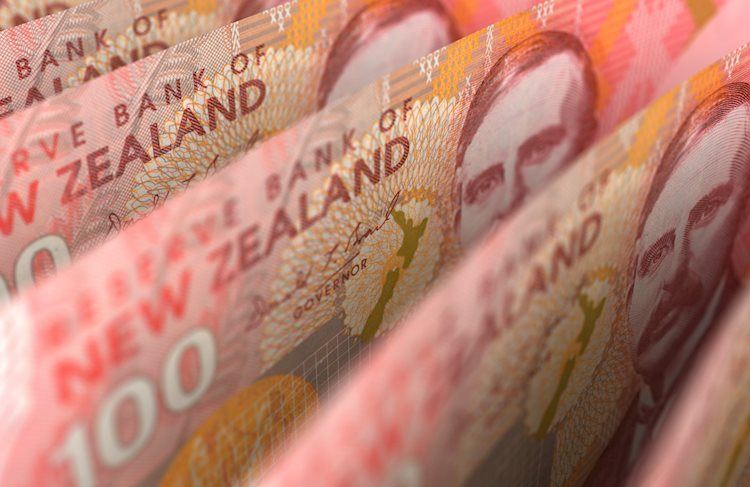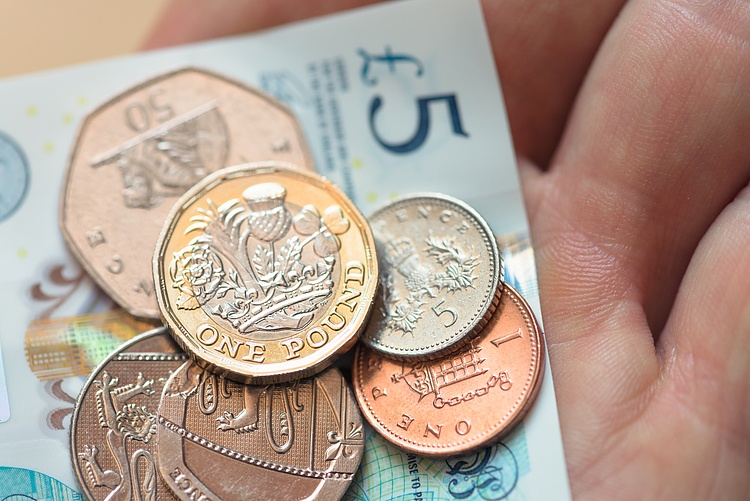Share:
Most recent article: Canadian Dollar stretches higher against the US Dollar on Friday after Canadian jobs beat
The Canadian Dollar sees downside pressure on Monday.
Canadian economic calendar data is limited in the early week, USD flows to dominate.
The next BoC rate call is coming up on Wednesday.
The Canadian Dollar (CAD) pared back some of last week’s gains as the US Dollar (USD) sees a broad-market recovery on the back of renewed risk aversion. The Canadian Dollar is down roughly a third of a percent against the Greenback on Monday.
Canada is absent from the economic calendar for the early half of the week, with the latest rate call from the Bank of Canada (BoC) due on Wednesday. The BoC is expected to hold rates steady at 5% for the fourth meeting in a row.
The Canadian Dollar has given back a third of a percent against the US Dollar in Monday trading.
The CAD has performed strongest against the Antipodeans to kick off the trading week, up nearly six-tenths of a percent and nearly a half of a percent against the Aussie (AUD) and the Kiwi (NZD), respectively.
The Canadian Dollar is seeing Monday gains against all major currencies except for the US Dollar.
The BoC’s upcoming rate call should represent an entire quarter of no rate hikes, as long as policymakers meet markets in the middle.
The BoC raised eyebrows when they gave interest rates an additional 25-basis-point bump back in July.
Monday’s markets are chewing on a miss in US Factory Orders, which also saw a downside revision to previous figures.
US Factory Orders declined 3.6% in October, falling even further below the median market forecast of a 2.6% contraction.
September’s US Factory Orders were revised from 2.6% to 2.3%.
Tuesday will bring more of the same CAD-light data docket, with the US ISM Services Purchasing Managers Index (PMI) being the key data focus.
Canadian Dollar price today
The table below shows the percentage change of Canadian Dollar (CAD) against listed major currencies today. Canadian Dollar was the weakest against the US Dollar.
USD
EUR
GBP
CAD
AUD
JPY
NZD
CHF
USD
0.62%
0.67%
0.32%
0.94%
0.55%
0.76%
0.62%
EUR
-0.64%
0.08%
-0.29%
0.33%
-0.07%
0.16%
0.01%
GBP
-0.70%
-0.07%
-0.35%
0.26%
-0.12%
0.08%
-0.06%
CAD
-0.32%
0.30%
0.36%
0.63%
0.22%
0.45%
0.29%
AUD
-0.95%
-0.34%
-0.26%
-0.62%
-0.40%
-0.17%
-0.32%
JPY
-0.59%
0.07%
0.28%
-0.19%
0.43%
0.21%
0.06%
NZD
-0.76%
-0.15%
-0.08%
-0.43%
0.18%
-0.20%
-0.14%
CHF
-0.63%
0.01%
0.06%
-0.29%
0.33%
-0.06%
0.15%
The heat map shows percentage changes of major currencies against each other. The base currency is picked from the left column, while the quote currency is picked from the top row. For example, if you pick the Euro from the left column and move along the horizontal line to the Japanese Yen, the percentage change displayed in the box will represent EUR (base)/JPY (quote).
The Canadian Dollar (CAD) fell back against the US Dollar (USD) in a broad-market risk rebound that sent the USD/CAD higher after rebounding from the 1.3500 handle.
Near-term bullish momentum remains limited with the USD/CAD getting snagged on the 50-hour Simple Moving Average (SMA), and Monday’s current high bid sits at 1.3560.
Intraday action sees a technical ceiling at the 200-hour SMA near 1.3610, and the figure for Canadian Dollar bidders to beat will be Monday’s bottom bids at 1.3480.
Monday’s pullback brings omens of US Dollar (USD) strength on the daily candlesticks, with the 200-day SMA acting as technical support just above the 1.3500 handle.
Adding to the US Dollar rebound picture, technical indicators are leaning firmly into exhaustion territory, with the 14-day Relative Strength Index (RSI) tapping the lower bound, indicating oversold conditions.
On the other hand, a bullish continuation of the Canadian Dollar’s recent strength will see a fresh run at September’s low bids near 1.3380.
Risk sentiment FAQs
What do the terms”risk-on” and “risk-off” mean when referring to sentiment in financial markets?
In the world of financial jargon the two widely used terms “risk-on” and “risk off” refer to the level of risk that investors are willing to stomach during the period referenced. In a “risk-on” market, investors are optimistic about the future and more willing to buy risky assets. In a “risk-off” market investors start to ‘play it safe’ because they are worried about the future, and therefore buy less risky assets that are more certain of bringing a return, even if it is relatively modest.
What are the key assets to track to understand risk sentiment dynamics?
Typically, during periods of “risk-on”, stock markets will rise, most commodities – except Gold – will also gain in value, since they benefit from a positive growth outlook. The currencies of nations that are heavy commodity exporters strengthen because of increased demand, and Cryptocurrencies rise. In a “risk-off” market, Bonds go up – especially major government Bonds – Gold shines, and safe-haven currencies such as the Japanese Yen, Swiss Franc and US Dollar all benefit.
Which currencies strengthen when sentiment is “risk-on”?
The Australian Dollar (AUD), the Canadian Dollar (CAD), the New Zealand Dollar (NZD) and minor FX like the Ruble (RUB) and the South African Rand (ZAR), all tend to rise in markets that are “risk-on”. This is because the economies of these currencies are heavily reliant on commodity exports for growth, and commodities tend to rise in price during risk-on periods. This is because investors foresee greater demand for raw materials in the future due to heightened economic activity.
Which currencies strengthen when sentiment is “risk-off”?
The major currencies that tend to rise during periods of “risk-off” are the US Dollar (USD), the Japanese Yen (JPY) and the Swiss Franc (CHF). The US Dollar, because it is the world’s reserve currency, and because in times of crisis investors buy US government debt, which is seen as safe because the largest economy in the world is unlikely to default. The Yen, from increased demand for Japanese government bonds, because a high proportion are held by domestic investors who are unlikely to dump them – even in a crisis. The Swiss Franc, because strict Swiss banking laws offer investors enhanced capital protection.
Share:
Feed news
Note: All information on this page is subject to change. The use of this website constitutes acceptance of our user agreement. Please read our privacy policy and legal disclaimer.
Opinions expressed at FXstreet.com are those of the individual authors and do not necessarily represent the opinion of FXstreet.com or its management.
Risk Disclosure: Trading foreign exchange on margin carries a high level of risk, and may not be suitable for all investors. The high degree of leverage can work against you as well as for you. Before deciding to invest in foreign exchange you should carefully consider your investment objectives, level of experience, and risk appetite. The possibility exists that you could sustain a loss of some or all of your initial investment and therefore you should not invest money that you cannot afford to lose. You should be aware of all the risks associated with foreign exchange trading, and seek advice from an independent financial advisor if you have any doubts.





